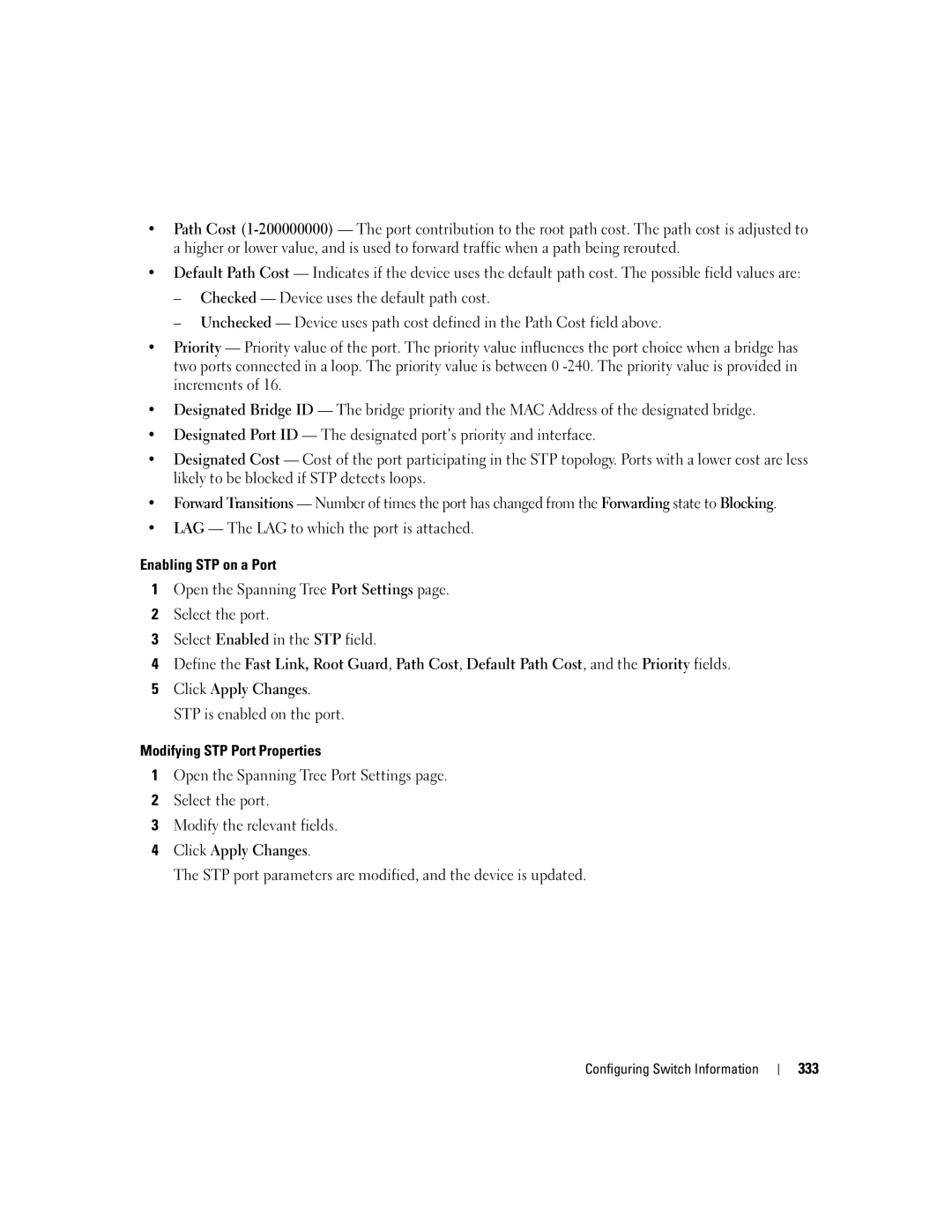•Path Cost
•Default Path Cost — Indicates if the device uses the default path cost. The possible field values are:
–Checked — Device uses the default path cost.
–Unchecked — Device uses path cost defined in the Path Cost field above.
•Priority — Priority value of the port. The priority value influences the port choice when a bridge has two ports connected in a loop. The priority value is between 0
•Designated Bridge ID — The bridge priority and the MAC Address of the designated bridge.
•Designated Port ID — The designated port’s priority and interface.
•Designated Cost — Cost of the port participating in the STP topology. Ports with a lower cost are less likely to be blocked if STP detects loops.
•Forward Transitions — Number of times the port has changed from the Forwarding state to Blocking.
•LAG — The LAG to which the port is attached.
Enabling STP on a Port
1Open the Spanning Tree Port Settings page.
2Select the port.
3Select Enabled in the STP field.
4Define the Fast Link, Root Guard, Path Cost, Default Path Cost, and the Priority fields.
5Click Apply Changes. STP is enabled on the port.
Modifying STP Port Properties
1Open the Spanning Tree Port Settings page.
2Select the port.
3Modify the relevant fields.
4Click Apply Changes.
The STP port parameters are modified, and the device is updated.
